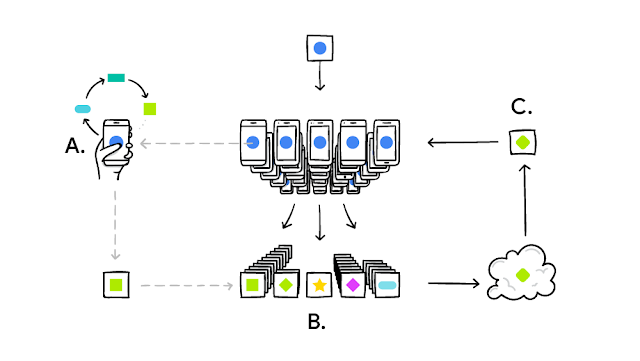AI Federated Learning
See https://ai.googleblog.com/2017/04/federated-learning-collaborative.html , a Google blog describing federated learning. I am encouraged about the possibilities of using federated AI to enable user privacy of healthcare data on mobile or edge devices. Continuously captured local data on a mobile device stays localized, secure and private while the disease state prediction model improves. The phone, IoT, and edge devices in the home capturing biometric data, weight, behavior, and other exogenous data can feed updates to a shared model; the model is subsequently improved on your phone, creating immediate benefit. Not sending or storing personal data in the cloud alleviates many security and privacy concerns without sacrificing a robust model. Such techniques should foster and accelerate, creating a digital twin housed on our phones representing our current and future health states.
Several medical organizations collaborate to improve mammogram diagnosis using AI working with NVIDIA using federated learning. NVIDIA's has a SDK enabling federating learning using NVIDIA hardware. Different edge devices can collaborate, train and contribute to a global model without moving the data on the edge device to a cloud AI. Partial model weights are shared with the global model from each edge device preserving privacy of the data. See https://developer.nvidia.com/blog/federated-learning-clara/.
Several startups have emerged in this space, including https://www.s20.ai/, https://owkin.com/ , and https://snips.ai/ recently acquired by Sonos.
